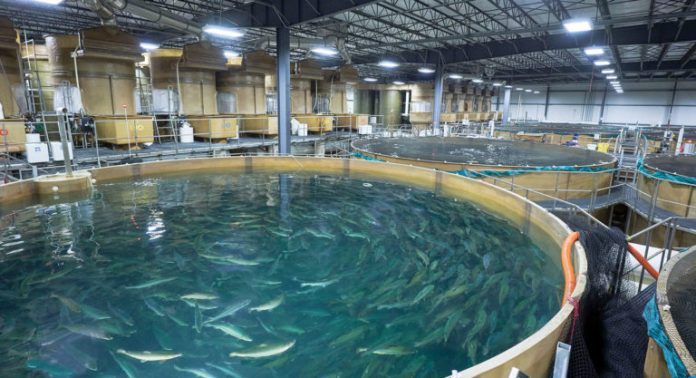Losses come despite first commercial harvests and sales of genetically engineered salmon.
Massachusetts-based AquaBounty Technologies, the land-based aquaculture company, has released its financial results for the second quarter.
Net losses for the first six months of 2021 were $9.4m, compared to $6.6m in the same period of the prior year. According to the company, the losses reflect the growth in biomass, headcount and production expenses at the farms, as well as increases in corporate and marketing expenses.
Revenue was $302 thousand, compared to $10 thousand in the same period of the prior year.
The second quarter was marked by two significant operational milestones for the company, including the first commercial harvests and sales of genetically engineered salmon from its land-based fish farm in Indiana, and the selection of Pioneer, Ohio as the site location for a 479,000 square-foot facility – as reported last week in SalmonBusiness.
Commenting on the results, Sylvia Wulf, Chief Executive Officer of AquaBounty, said, “We have experienced challenges with the availability of personnel and the age of the technology at our Indiana farm, however we are addressing these issues and incorporating insights gained into the design of our large-scale farm. We will continue to ramp up our harvest schedule over the remainder of this year to each farm’s full capacity to meet growing demand. With the food service industry quickly regaining momentum toward pre-pandemic activity and with restaurants reopening nationally, we remain very optimistic for the demand for our fish.”
AquaBounty’s genetically modified salmon first received approval for human consumption in 2015. The company’s genetically engineered salmon program is based on a single, specific molecular modification in salmon that results in more rapid growth in early development. AquaBounty says it is raising salmon free of antibiotics and other contaminants in Recirculating Aquaculture Systems designed to prevent disease and include multiple levels of fish containment to protect wild fish populations.

